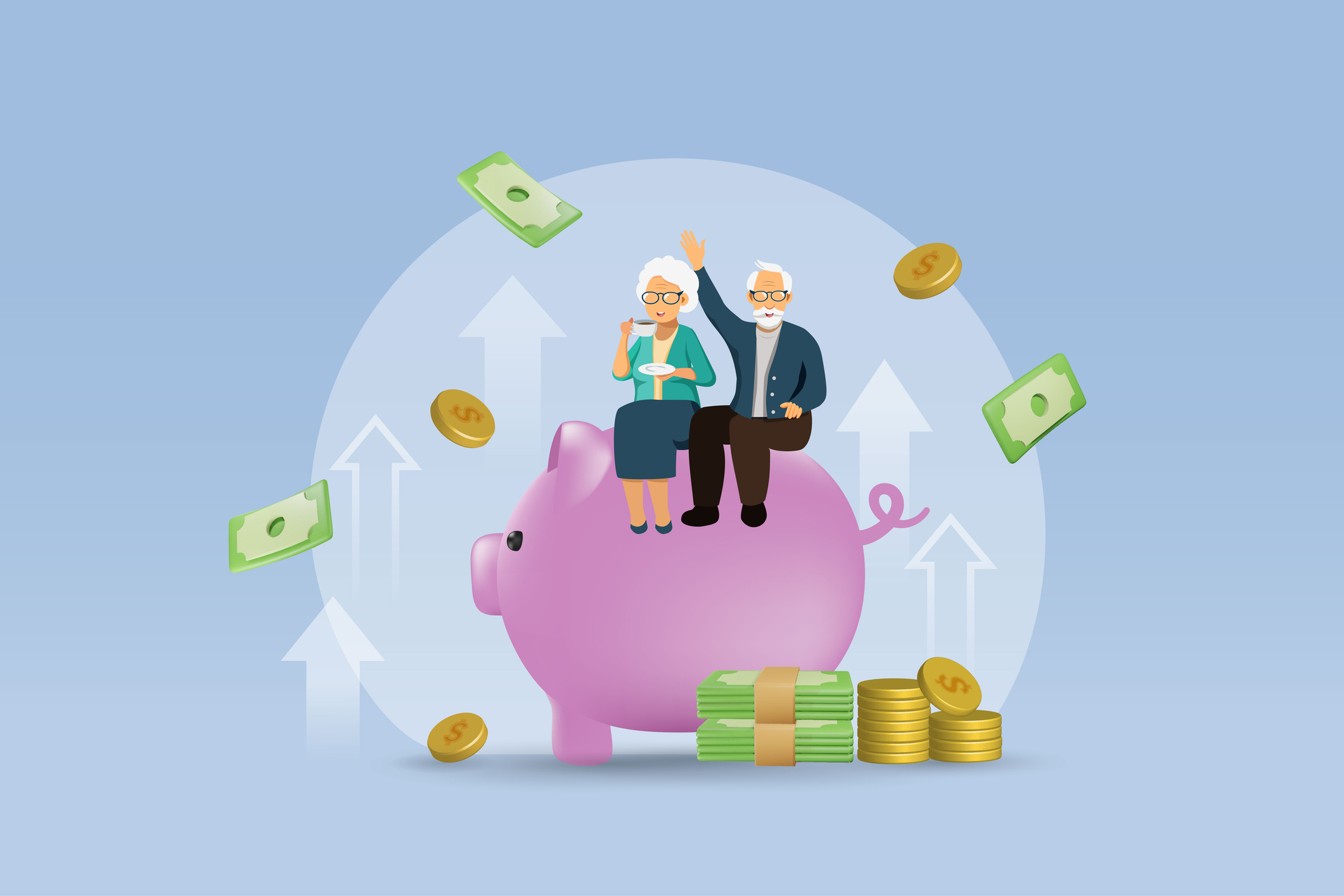Nearing or In Retirement? Capitalize on Tax Cuts with a Roth IRA Conversion
We've got seven more years of lower tax rates, so what are you waiting for?

We can’t control the government or tax rates, but we can control how we invest our money.
That’s especially important in retirement, when the last thing you want is an unwelcome tax surprise.
The Tax Cuts and Jobs Act of 2017 offers a window of opportunity to potentially take advantage of lower tax rates for the next seven years (the lower individual rates expire after 2025). I believe these may be the lowest tax rates that many households will see in their lifetimes, because after the plan expires, tax rates most likely will go back to where they were before — or higher. That’s because of our increasing national debt combined with the potentially decreasing tax revenues being collected by the government over the next several years.
From just $107.88 $24.99 for Kiplinger Personal Finance
Become a smarter, better informed investor. Subscribe from just $107.88 $24.99, plus get up to 4 Special Issues

Sign up for Kiplinger’s Free Newsletters
Profit and prosper with the best of expert advice on investing, taxes, retirement, personal finance and more - straight to your e-mail.
Profit and prosper with the best of expert advice - straight to your e-mail.
So, if Congress does raise taxes after 2025, how much better off — or worse off — could you be financially at that point? Much of that depends on how well you plan and adjust now.
As you weigh your options, this could be a great opportunity to take money out of your IRA, 401(k), or other retirement accounts and do a Roth conversion.
Roth IRAs can be a great fit for several reasons. For starters, perhaps the biggest tax benefit of Roth IRAs is that all future growth within them is 100% tax-free — to you, the owner of the account, as well as to your beneficiaries when you pass away. Another major benefit of a Roth IRA is there is no such thing as a mandatory required minimum distribution (RMD) at age 70½ and after, as there are with traditional IRAs and 401(k)-type accounts.
Roth IRAs have had their advantages since their inception in 1998, but these tax cuts potentially make them a no-brainer. The tax cuts could potentially create a situation where you could be able to convert just as much as you did before the tax cuts — in some brackets, even more ‐ from a traditional IRA or 401(k) to a Roth IRA and pay less in taxes. These tax cuts could potentially save you and your family hundreds, if not thousands, of dollars.
However you approach your savings in retirement, remember something important during your working years: First, when leaving a job, most of the time it doesn’t make good financial sense to leave your retirement, your 401(k), in your previous employer’s account. In my opinion, when you leave employment, usually the best thing you can do is to take control of your money and gain all the horsepower you can with it by rolling your money out of your previous employer’s plan and into your own self-controlled IRA.
When you roll your money over from your previous employer’s 401(k) plan into your own self-controlled IRA, you gain all the control, choices, flexibility and options of your money. If done properly, you should not be charged any fees or face any negative tax consequences upon opening your own IRA or for rolling your money out of an employer’s 401(k) plan, and you have the flexibility to choose any custodian you like and the power of tens of thousands of investment options. Your own self-controlled IRA is potentially a more powerful place to grow your money tax-deferred.
Now, tax-deferred growth in 401(k)/IRA type accounts is wonderful when you’re in the growth phase of life. However, once you are near or in retirement, you’re probably not taking as many risks with your life savings — or at least you shouldn’t be. Taxes tend to be a big problem in retirement, one that many people don’t think about — or plan for. In fact, many people think that when they retire they’ll be in the lowest tax bracket of their lives. But that’s not necessarily true. You have to be careful and, for example, think about what could happen with the money that’s in your IRA and how that could affect your taxes when it comes time to take distributions.
Let’s look at how that could play out.
The RMD begins when you reach age 70½ and continues every year thereafter. At that point, you are required to start withdrawing a pre-determined amount of money from tax-deferred retirement accounts each year — whether you want to or not. Just how much money? That’s calculated by dividing the previous year-end account value by a distribution period factor determined by the IRS. The distribution period essentially is a life-expectancy number.
For that first year, the total in your account would be divided by 27.4 based on the life-expectancy chart the IRS uses. If your IRA was worth $500,000, you would have to withdraw a minimum of $18,248, which is added to all of your other income and taxed as ordinary income. Every year you grow older, the remaining life expectancy factor gets smaller, and when you divide by a smaller number you get a larger result. At age 80, for example, if your IRA is worth $500,000, the factor you divide by is 18.7, which means you are required to take out is $27,738!
Add these mandatory IRA withdrawals to all of your other income sources, such as a pension and/or Social Security, and you can see how a retiree’s tax bracket may be higher than anticipated, especially after age 70. A lot of investors fail to proactively plan for this and find themselves in their 70s, 80s and 90s in potentially the same, or even higher, tax bracket than when they were working.
Here’s another potential side effect for a retiree: Some people are required to pay a higher tax on their Social Security after age 70 because RMDs are added to their provisional income, which determines how much of their Social Security will be taxed. We have seen some people go from having none of their Social Security taxed to more than 50% of it being taxed simply due to the amount of their RMD.
The current tax cuts of the next seven years potentially offer a window of opportunity in the bigger picture of retirement — to convert your 401(k)/IRA dollars into a Roth IRA, where the proceeds can grow tax free and aren’t subject to required distributions. We’re living longer, making it all the more imperative that your money lasts as long as you do. Proactive planning during these tax-cut years can potentially help you get ahead of a rising tax environment later in life by paying lower taxes now, as well as help you pass along a legacy to your heirs at a much higher value.
In my experience, every family and plan is different. I suggest you speak with an appropriately licensed financial and/or tax adviser about your situation.
Dan Dunkin contributed to this article.
The appearances in Kiplinger were obtained through a PR program. The columnist received assistance from a public relations firm in preparing this piece for submission to Kiplinger.com. Kiplinger was not compensated in any way.
Profit and prosper with the best of Kiplinger's advice on investing, taxes, retirement, personal finance and much more. Delivered daily. Enter your email in the box and click Sign Me Up.

Jason F. Cryderman is the president and co-founder of Great Lakes Investment Advisors, Inc. He helps educate and empower families to make better decisions with their money. Jason is a licensed Investment Adviser Representative and holds licenses in health and life insurance, as well as variable annuities.
-
 It's Beginning to Look a Lot Like a Santa Rally: Stock Market Today
It's Beginning to Look a Lot Like a Santa Rally: Stock Market TodayInvestors, traders and speculators are beginning to like the looks of a potential year-end rally.
-
 The 2026 Retirement Catch-Up Curveball: What High Earners Over 50 Need to Know Now
The 2026 Retirement Catch-Up Curveball: What High Earners Over 50 Need to Know NowUnlock the secrets of the 2026 retirement catch-up provisions: A must-read for high earners aged 50 and above.
-
 How Much a $100K Jumbo CD Earns You
How Much a $100K Jumbo CD Earns YouYou might be surprised at how fast a jumbo CD helps you reach your goals.
-
 A Financial Planner Takes a Deep Dive Into How Charitable Trusts Benefit You and Your Favorite Charities
A Financial Planner Takes a Deep Dive Into How Charitable Trusts Benefit You and Your Favorite CharitiesThese dual-purpose tools let affluent families combine philanthropic goals with advanced tax planning to generate income, reduce estate taxes and preserve wealth.
-
 A 5-Step Plan for Parents of Children With Special Needs, From a Financial Planner
A 5-Step Plan for Parents of Children With Special Needs, From a Financial PlannerGuidance to help ensure your child's needs are supported now and in the future – while protecting your own financial well-being.
-
 A Wealth Adviser Explains: 4 Times I'd Give the Green Light for a Roth Conversion (and 4 Times I'd Say It's a No-Go)
A Wealth Adviser Explains: 4 Times I'd Give the Green Light for a Roth Conversion (and 4 Times I'd Say It's a No-Go)Roth conversions should never be done on a whim — they're a product of careful timing and long-term tax considerations. So how can you tell whether to go ahead?
-
 A 4-Step Anxiety-Reducing Retirement Road Map, From a Financial Adviser
A 4-Step Anxiety-Reducing Retirement Road Map, From a Financial AdviserThis helpful process covers everything from assessing your current finances and risks to implementing and managing your personalized retirement income plan.
-
 The $183,000 RMD Shock: Why Roth Conversions in Your 70s Can Be Risky
The $183,000 RMD Shock: Why Roth Conversions in Your 70s Can Be RiskyConverting retirement funds to a Roth is a smart strategy for many, but the older you are, the less time you have to recover the tax bite from the conversion.
-
 A Financial Pro Breaks Retirement Planning Into 5 Manageable Pieces
A Financial Pro Breaks Retirement Planning Into 5 Manageable PiecesThis retirement plan focuses on five key areas — income generation, tax management, asset withdrawals, planning for big expenses and health care, and legacy.
-
 4 Financial To-Dos to Finish 2025 Strong and Start 2026 on Solid Ground
4 Financial To-Dos to Finish 2025 Strong and Start 2026 on Solid GroundDon't overlook these important year-end check-ins. Missed opportunities and avoidable mistakes could end up costing you if you're not paying attention.
-
 Are You Putting Yourself Last? The Cost Could Be Your Retirement Security
Are You Putting Yourself Last? The Cost Could Be Your Retirement SecurityIf you're part of the sandwich generation, it's critical that you don't let the needs of your aging parents come at the expense of your future.
